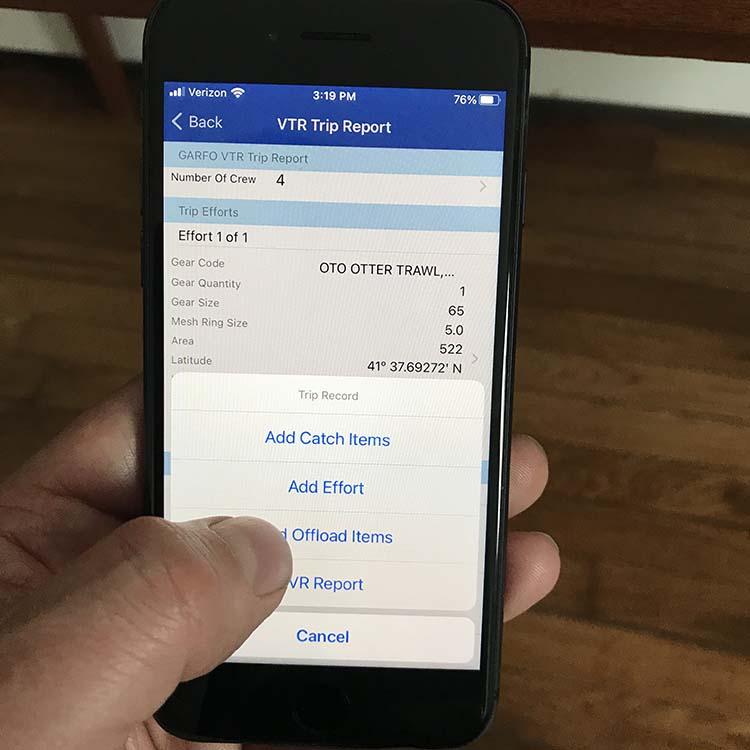NMFS and the Northeast fishing fleet will shift to fully electronic catch reporting this fall for most commercial and for-hire fishing vessels, says the agency’s Greater Atlantic regional office.
It’s the end of the traditional paper logbooks distributed by the agency, where officials say the new system via digital devices “will increase reporting efficiency, accuracy, and timeliness of the fisheries data we use to manage fish stocks in our region.”
In an April 5 announcement promoting the system, NMFS quotes “early adopters” who have been using the electronic reports.
Ryan Kelly, owner/operator of the Seaquestor II out of Barnegat Light, N.J., has been reporting electronically for several years using his iPhone and the NMFS iOS Fish Online app.
Kelly has several vessels and finds the system more efficient than using paper. Two useful features for him are an automatic function that sends reports quickly to designated federal or state agencies, and “quick pick” buttons for frequently used information so he doesn’t have to enter the same things each time. That feature is especially useful in rough weather when Kelly has more to do than punch in data.
Kelly has been helping other fishermen learn how to use electronic reporting. One newcomer is Patrick Fehily, owner/operator of the Major Expense and Market Price based at Point Pleasant Beach, N.J.
Fehily found the Fish Online app ensures that all entries are complete and correct before a report can be submitted – so there’s no need to make corrections later, while using the app prevents any data garbling from handwriting or code issues. It is, Fehily says, “actually one of the easiest apps I have ever used in my life, and it’s so easy to use as an operator that you can’t really make a mistake with it.”
Fehily says now is the time for fishermen to start using it, and not wait until the last minute when NMFS staff will be very busy assisting fishermen’s transition to electronic reporting.
Meanwhile, in an April 2 bulletin NMFS officials announced details of the agency’s policy on reimbursing electronic monitoring costs, “in addition to human at-sea monitoring costs, while funds are available. We encourage industry to purchase and install electronic systems now.”
“For the 2021 fishing year, groundfish sector vessels may use either electronic monitoring or human at-sea monitors to meet the monitoring requirements, provided the sector has a corresponding monitoring program as part of its approved operations plan.”
Vessels operators that choose electronic monitoring are eligible for reimbursement while funding is available, and the new policy establishes guidance for the sectors and companies that provide electronic monitoring services.
Sectors can submit receipts for reimbursable costs to the Atlantic States Marine Fisheries Commission for reimbursement, using the same process as at-sea monitoring reimbursement with costs broken down as:
• Equipment and technical support costs should be billed at the vessel-level.
• Video review costs should be billed at the trip-level.
• Training and operational costs should be billed at the sector-level.
Some cost categories are not eligible for reimbursement. Examples of ineligible costs include, but are not limited to:
• Research and development for machine learning and artificial intelligence.
• Portside infrastructure (e.g., hotspots).
• Electronic monitoring equipment that is not necessary for the vessel to meet monitoring requirements (e.g., engine room cameras).
NMFS is encouraging sector participants to buy and install monitoring systems to prepare for the New England Fishery Management Council’s plan to increase monitoring coverage rates when the next fishing year starts May 1, 2022.







